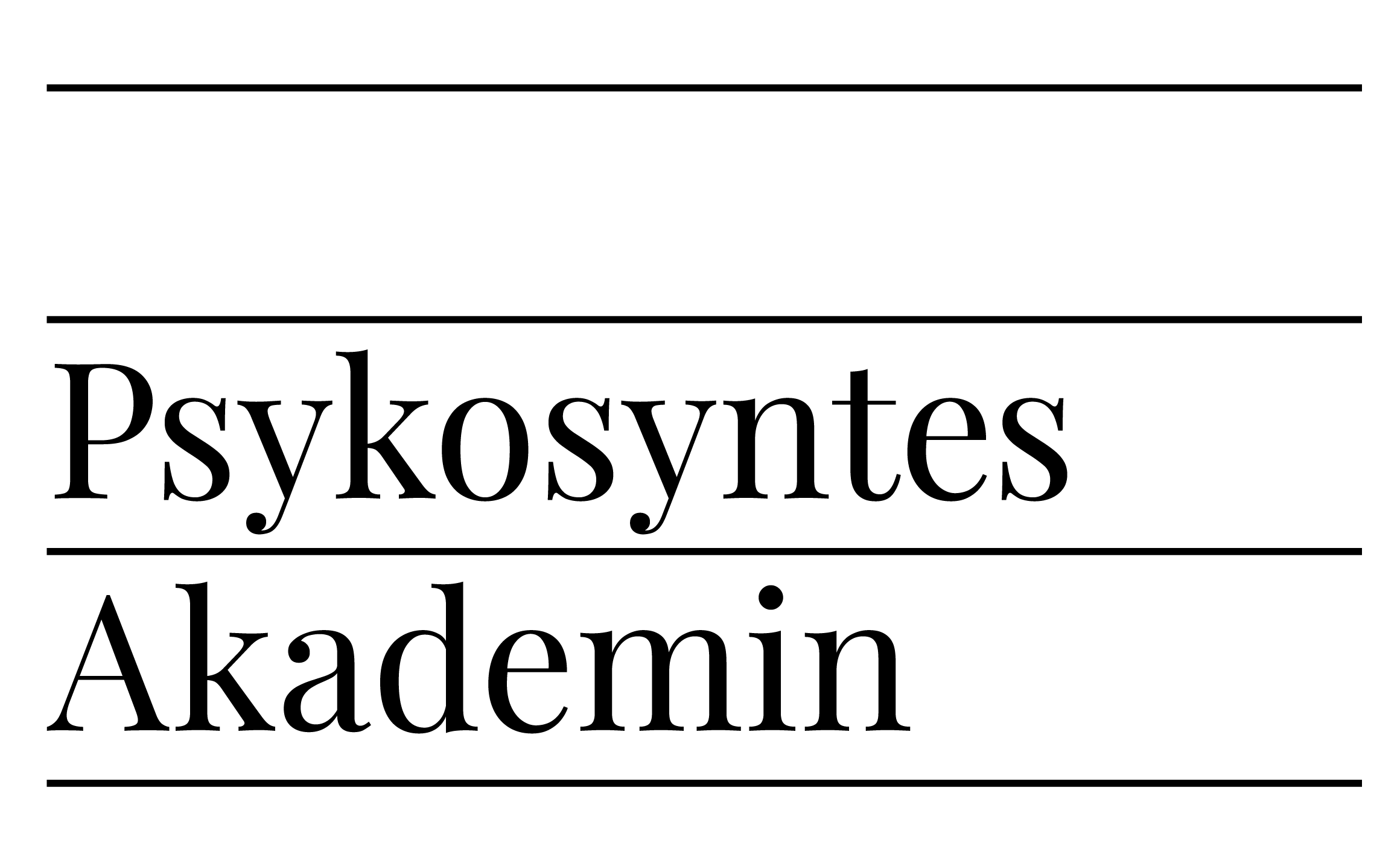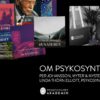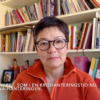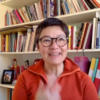Occasional Note #1
Presence, Power, and the Planet
Introduction
Of all the practices that I have taught in the last twenty-five years to professionals and lay people who were interested in the spiritual dimension, the practice of presence has emerged as the most central and valuable. This has been particularly true in the last ten years as I have conceived it more clearly and made it a centerpiece in my teaching and training, but even in my early work its embryo was there. So in this final paper of this collection of readings in Spiritual Psychology, I want to focus on it particularly and explore its connection to power and the health of the planet as a whole. I do this both because it is clear to me that this practice is central to the development of spiritual strength and maturity and because it is something that each of us, no matter who we are and where we are, can cultivate in ourselves. There is nothing esoteric and remote about the practice of presence, nothing hidden, or special, or complicated, though as a practice, it is at one and the same time very simple and very difficult. The practice and the experience is available to each and every one of us, regardless of age, race, class, culture, gender, nationality, and it helps with contacting, restoring, and strengthening the connection to our deepest selves, to those around us, and to the larger natural world of which we are a part. It addresses spiritual hunger in healing the soul wound and species maturity in developing spiritual strength. And it roots us in an experience of being fully alive and well on earth. So let me first describe the actual practice and then I will comment on its manifold usefulness. I quote from a one page practice description I use in my training programs.
Presence
“The experience of presence is a central aspect of human psychological health and maturity. It is the capacity to be fully present to what is happening within, and around, oneself in the present moment and not be drawn into distractions, reactions, projections, or defenses. It enables us to respond rather than react. In common parlance presence is often described as “being centered”, but all religious traditions as well point to this experience of being, and remaining, in the present moment as the doorway to our deeper strengths and wisdom and the means by which we touch the Eternal Now.
From a psychological perspective, the practice of presence cultivates a psychological center within us from which we are able to be aware of the contents of our personal experience without being identified with them and able to see more clearly what is really happening in the world around us. We can, then, from this center, make choices as to the best way to respond in each situation we encounter. The cultivation of this inner center gives us perspective and freedom from our overreactions, defenses, and impulses, so that we are less likely to react unconsciously as conditions change around us, but rather choose, on the basis of our wisdom and calm understanding, the best course to take, given the situation.
This psychological center is sometimes called “the observer”, “the fair witness”, or the “I”. Each person will have his/her own name for it, and we can all learn to contact and strengthen it so that it becomes stronger and more versatile in difficult inner and outer situations. The practice of presence is one way among many that can help build this center within.
The Practice of Presence
Part I – Inside World
1. Sit in a comfortable, alert position and close your eyes.
2. Focus your attention on your breathing and begin to follow its movement without changing it in any way.
3. Become aware, in this movement, of the natural rhythm of your breathing and begin to let yourself rest in that rhythm of inhalation and exhalation.
4. Let this rhythm gradually become a place of rest for you, where you can let go of any preoccupations and simply remain with the movement of your breath in and out of your body.
5. If thoughts, feelings, or sensations arise in your experience, acknowledge them, but then return your attention to your breathing, so that you remain in the center as they come and go.
Part II – Outside World
1. Do the same practice as described above, but now keep your eyes open, so you maintain contact with the outside world as you continue to rest in your center of awareness.
2. As you become aware of particular objects, people, and/or events, acknowledge them silently with your eyes, but keep your attention on the rhythm of your breathing and remain in your center.
3. Practice staying rooted in this center while you are in contact with the outside world and are observing the many changes that happen moment to moment there.
4. Now, add words to your contact with the outside world and see if you can stay connected to your center and be present while talking and interacting in a normal way.
5. Be aware of, and study, the ways in which you do become distracted and lose touch with your center. Make note of these, so you can anticipate them in the future.
Part III – Natural World
1. Do the same practice as described above, again keeping your eyes open, so that you maintain contact with both inside and outside worlds simultaneously as you continue to rest in your center of awareness.
2. Focus your awareness on the natural world– plants, animals, landscape, weather, sun, moon, stars, earth and how all these combine moment to moment in infinite movement and interplay. Be aware of how these diverse elements surround and infuse our lives and how we are a part of this great and complex reality. Continue to rest in the rhythm of your breathing and remain in your center.
3. Become aware of the processes of birth and death that underlie these natural elements and our own lives and which bring movement and change moment to moment and over time. Gently embrace birth and death within the rhythm of your breathing and let your presence expand to include these natural principles as well as the natural world.
4. Continue to practice presence in this way, being aware of what you experience and also of what distracts you.
5. Welcome these distractions into your presence, so that your awareness expands to include them while you return to your breathing and your center.
6. Practice presence to whatever is in your experience in these three dimensions–inside, outside, natural worlds—and be aware of this as one reality in which you are a part and participant. Both rest in your center and practice welcoming the moment to moment changes in your experience in all these dimensions. Enjoy this flow of Life within and around you.
If we practice presence at first for short periods of time, we learn gradually what this experience feels like in our particular experience. As our center becomes stronger, we will find that we can sustain our presence for longer periods of time and in more difficult situations. Eventually it becomes a capacity and habit that contributes to our health, effectiveness, enjoyment, and peace of mind.
The practice itself is deceptively simple. The problems come is sustaining it over time, for we are immediately distracted from this point of presence by the many sensations, feelings, and thoughts that make up our inner personal experience and by the many events that make up the world around us. As we begin to practice, we discover that we are seldom actually present, but rather are distracted in any number of ways. And we discover that this is, in fact, a discipline that we need to develop in ourselves, and that it takes time and concentration. The difficulty is in the execution, not in the idea of presence, but, as we shall see, if we are willing to practice thus, we begin to be more deeply connected to the source of Life within us, to others, and to the world in which we live.”(1)
This practice, and the experience of presence that it fosters, is important for several reasons. First of all, presence is a central aspect of the experience of the soul, and its practice connects and roots us more deeply in the spiritual dimension. The soul is present to all Life, and is rooted in the vast web of inter-being. As personalities, we experience that we are not, and often we are chronically distracted, through identifications, attachments, and preoccupations, from this deeper reality. The practice of presence restores this soul-sense–this experience of being a soul on earth. It connects us to the truth of our own experience in the moment and over time, to those other human beings around us, familiar and strange, and to the larger world in which we live, including to other species with whom we share the earth. In this it nurtures all three aspects of the soul and is a doorway, within our immediate experience, to the soul and the spiritual dimension through which we can pass and through which soul force can pass through us into the world. The more focused and coherent our presence, the more connected we are, the more spiritual force can flow through us.
We all have had these moments of presence when past and future fall away and we experience a fullness of the present moment that brings us great joy and aliveness and often even lifts our fear of death. At those moments, sometimes alone, sometimes with others, often in nature, or with great art, we are sure of our life and its meaning and direction and experience deep gratitude for being alive on earth. The practice of presence seeks deliberately to increase the occurrences of such moments, and over time thus to develop a sustained connection to our soul and to all Life.
To speak about this experience more technically, what happens in us as we practice presence is a shift in our consciousness from polarization and consequent projection, or repression, to holding both sides of the same polarity, or multiple polarities. This shift increases the complexity of our experience, but, paradoxically, the more complex our experience becomes, and the more we are able to hold in our consciousness without reacting, projecting, etc., the more present we become. This leads, then, to an experience of simplicity, and underlying unity, but at no loss of the differentiation of existence. This is obviously quite different from the simplification that comes from reduction of complexity through polarization, repression, and projection. T.S. Eliot describes this state as “a condition of complete simplicity, costing not less than everything.” (2)
Paradoxically, also, as presence intensifies, or coheres, the details of our experience become more vivid, for, as time/space expands to eternity/infinity, we experience more clearly and precisely just where we are, and no details are skipped over, generalized, repressed, etc. We are simply in an incomprehensibly complex Now which is eternal and in which we touch the full truth of our experience. Often in spiritual practice the emphasis is put on touching the one underlying reality, but here we also touch, within that reality, the infinite and beautiful detail of our existence. Note that it makes no difference what the actual experience is– positive or negative, high or low–what is important is that it is true in that moment and that we are present to it. That truth is what is healing– that, and its seamless interrelationship with everything else that is going on at that moment.
Secondly, the practice of presence generates an energy, or force, field which quite literally radiates from us, or through us, and, as this field becomes stronger and more coherent, it affects others. Both in individual and group work, this field has healing properties, which I have described above, for it activates the point of presence in others, which in turn helps to root them in their own souls. We see this in therapeutic work very clearly where in this field there is an exchange of healing energy, the client is empowered and gains access to his/her own wisdom, and the therapist is able to discern more clearly how to be of help. It’s as if the two souls are talking to each other, and guiding the personalities in the best way to work. This is true as well in groups, where the presence of the leader and the generation of the group field empowers members and connects them to their own spiritual authority, so that they in turn can contribute to the field and to the process of group development and maturation. This soul force field, generated by the coherence of presence, is healing and contains within it a flow of love, and, at whatever level it is operating, it brings an experience of dynamic and creative peace, healing, and empowerment.
Thirdly, in this regard the practice of presence generates power that is both personal and spiritual as the soul force is released through the psyche and personality into the world. This power can be of considerable force and will be charismatic in its impact on others. Rightly and benignly used, it can foster constructive action and leadership, as we have seen in the case of “species forerunners”, and can be an agent of development and transformation at all levels of organization. But the phrase “rightly and benignly” is key, for we have seen in all centuries, and particularly in this last one, not only the misuse and abuse of charismatic power in the political and economic domination of others and the perpetration of injustices of many kinds, but also the misuse and abuse of so-called spiritual power toward the same ends. So the question arises “what is the right and benign use of power for the healing and betterment of the human condition?”
Here the lens of the three dimensions of experience is very useful. When power is benign and healing, it is when the soul force flows through the personality and psyche without distortion, i.e. these vehicles are coherent enough that they serve as healthy conduits for that energy and do not impede, or distort, it, but rather channel it in its mature form into the world through conscious and responsible action. If, on the other hand, there are blocks and dysfunctional patterns in these systems, then very often the force is “siphoned off” into the needs that underlie these patterns, and the leader begins to act unconsciously to meet these needs. Many leaders initially will be connected to a political, or spiritual, vision and will have considerable soul force available to carry it out, but as their leadership develops, the patterns in personality and psyche heat up, so to speak, and through such “ego inflation” the leader becomes increasingly disconnected from his/her soul and more identified with abusive power, and in extreme cases, with paranoia, over control, domination, and a host of behaviors that have often given leadership, political and spiritual, a bad name.
This phenomenon is rampant, and yet we need leaders who are connected to their souls and have power and a spiritual vision for the betterment of the species. We need leaders who will use their personal and cultural skills to work to improve the conditions under which we live as a species, will confront injustice and inequity, and will labor for the good of the whole, not the particular part that represents their vested interests. In short, we need leaders who manifest a spiritual maturity and whose power is rooted in the love of the whole, not in the fear and greed. We have had, and have such leaders now, but we need more, and what I am saying here is that the practice of presence is a means to strengthen connection to soul and soul force, and so is useful for a leader in staying connected, particularly as the spiritual force increases and the patterns in personality and psyche are tested to see if they can hold true to the flow of this force through them into the world.
The practice of presence, then, generates power as well as love and, because it is an experience, not only of deep connection to oneself, and to others, but also connection to all creation and every living being within it, it focuses this power in a constructive way, and provides the means for the leader, and others, to be aware of when this power begins to go awry. If, as leaders and co-workers, we experience this connection to all Life, then we are more likely to live and work and lead in ways that nurture Life. If we experience that we are one with all beings, then we will not be able to harm others, nor the world we share with them, but we will try to find those ways of being that sustain rather than destroy our common existence. Clearly, no one can do this completely, for always there are blocks and distortions, in personality and psyche, in culture, and nation. But spiritual practice, and particularly the practice of presence, can increase the likelihood that leadership will be exercised rightly and benignly so that it will be a force for healing and maturation in the world.
Presence also generates benign power because it aligns the intention and consequent action of the leader with his/her soul and reduces the personal reactivity and defensiveness out of which most action arises. A leader rooted in his/her soul through presence becomes creatively responsive to existing challenges rather than reactive, works with more wisdom and perspective, without attachment and identification, and so can wield his/her power in ways that are constructive and which contribute to the betterment of all. Power in itself is not bad, it is only how it is used. Power that is rooted in the soul and expressed in a clear way through the psyche and personality benefits the whole and plays a responsible part in it. Power that is a compensation for soul and psychological woundedness, and rises from a state of spiritual disconnection and starvation, will be abusive and destructive in subtle, or obvious, ways. Most of our experience with power is the latter, but there is no reason why power cannot be used to heal, and, indeed, there are many instances of this kind of leadership. Again, all leaders are capable of exercising both kinds of power. Often initially the leader is connected, as I said above, and then loses this connection in the course of leading. The opposite is also true– a leader can be quite self-serving initially and at some point awaken to a larger sense of his/her leadership and begin to use power in a very different and more soul-connected way. The complexity and struggle of leadership is that both tendencies exist in us, and we need to choose which to give our attention and intention.
There is a story that illustrates this struggle and choice. A visitor to the Sioux Reservation in South Dakota met a elderly woman who had a necklace with a double-headed wolf on it. The visitor noticed about it and asked, “was one good and one evil?” The woman indicated that would be a way to see them, and the visitor then asked, “which one will win?” She looked at him steadily and replied, “the one I feed.” Always we have a choice as to how we act in our power and are responsible for that choice and its consequences.
Presence, then, and the choices that are made from that place of spiritual connection, can generate spiritual strength and power and increase our capacity for care for the planet, whether this is expressed in an overtly planetary way, or in a very local way that is rooted in this larger context. In recent years the adage “Think globally, act locally” has been amended to “Think globally, act very, very locally” and I would again amend it to “Think globally, love and act very, very locally”, for love is at the root of a spiritual power that works in this way. For the most part, fear is what drives our use of power, and, though sometimes effective in the short run, in the long it always has negative side effects. The challenge is to learn to use power, both personal and spiritual, so that it both expresses and increases the love in the world– love not only for ourselves and those we love, but for all beings on the earth and for the earth herself.
Finally, presence is important because it increases our apperception of earthly beauty. When we are fully present, we are aware of how beautiful the earth is, and how precious life is upon it. We are aware of our own beauty and that of those around us, and at those moments we are often staggered by the intensity of what we experience and wonder at how easily we forget this, how easily we do not see and receive this beauty, praise and protect it. Again, if we really saw how beautiful creation is, in its variety and majesty, we would revere and honor it and do everything we could to protect and nurture it. We all have moments when we touch this experience, and they are moments when we are fully present to what is within and around us, but there are many more for most of us, when we do not see, or hear, or taste, or touch, or smell what is right before us and so lose touch with ourselves and with the incredible beauty of all Life.
The principle in this apperception of beauty is particularity, one often overlooked in spiritual work, as I said above, with its usual emphasis on oneness and union. We are, of course, in essence one with each other and all beings, but in actual practice this unity is always expressed through the very particular and unique details of existence and an infinite diversity of form. No two forms of life are exactly the same, each has its own particularity and differences, its own identity. What is important to realize is that, paradoxically, in the experience of presence we become both connected to all Life and remain completely ourselves, but now suffused by this larger context. Many spiritual teachers miss this aspect of the experience by teaching “unity” only, so that others have to conform to the teachings at the expense of their diversity and particularity and, therefore, unique beauty. We have seen this happen again and again in religious and political movements, and always there is a loss of soul-connection in this process. Conversely, if we make sure that the particularity is affirmed and expressed, then the unity will emerge naturally as the context for those details. The practice of presence is not to anything general, or abstract, but to the particularity of existence in every moment, to the details, and this apperception of beauty, in turn, increases the coherence and power we have with which to act in the world. The practice of presence, ultimately, roots us in the beauty of all Life, or, to use a Greek work, in “the cosmos”, which is the word for beauty in the microcosm, and for the divine order in the macrocosm. If we are present in the way I have described, then we are fully alive, both to our own life and to the larger Life of which we are a part and participant.
So connection, love, power, and beauty all arise from the practice of presence. All of us yearn to, and all fall short of, living our lives with presence. Yet all of us are capable of this, and the planet needs us to live closer to these qualities within us. The practice of presence can help, as can the principles of Spiritual Psychology and many other psycho-spiritual approaches that we have available to us. Life itself tends in this direction, given the chance, but we are the ones who are responsible for providing that chance to ourselves and all beings. Will we do it? Will we do it soon enough? These are the questions of our generation and the next.
I would like to end this paper, and this collection, with three quotations, the first from my grandfather, Edward Yeomans Sr., the second a poem by Francisco Albanez, the third a poem by Rainer Maria Rilke.
My grandfather, Edward Yeomans, in some of the last writings of his life, said, “What is good for us is what enhances our life. But, by the very nature of things, what enhances our life can never injure any other life.”(3)
Francisco Albanez,(4) in the poem below, speaks to how we become separated, how we yearn, and how we can find our way home to the soul, who we, in deepest truth, are.
The One Who Is At Home
Each day I long so much to see
The true teacher. And each time
At dusk when I open the cabin
Door and empty the teapot,
I think I know where he is:
West of us, in the forest.
Or perhaps I am the one
Who is out in the night,
The forest sand wet under
My feet, moonlight shining
On the sides of the birch trees,
The sea far off gleaming.
And he is the one who is
At home. He sits in my chair
Calmly; he reads and prays
All night. He loves to feel
His own body around him;
He does not leave his house.
And Rilke, in this poem written in 1912/13 speaks to the complexity and beauty of presence to Life. (5)
The almond trees in bloom: the most we can achieve here is to know ourselves unreservedly in our earthly appearance.
Always I marvel at you, you blessed ones,– at your demeanor,
the way you bear transient jewels with eternal ease.
Ah, if we knew how to blossom: our hearts would be out beyond all lesser dangers, safe in the single great one.
With these thoughts I conclude for now. Clearly we live in troubled times, and yet they are also times of renewal and rebirth. There is a Chinese blessing that says “May you be born in difficult times”, for it is these times that test and strengthen the soul. So, in this global crisis lies an opportunity for each of us to mature spiritually and to play our particular part in the world. Each of us has this opportunity and the choice. May we be worthy of this blessing!
………………………………………………………..
Notes
1 Yeomans, T. “The Practice of Presence”. Concord Institute Publications: Concord, MA, 1998
2 Eliot, T.S., Four Quartets. New York: Harcourt, Brace, and World, 1943.
3 Yeomans, Edward, Sr., Occasional Notes lV. Tuttle Press: Putney, VT, 1941
4 Albanez, Francisco, translated by Robert Bly. Source unknown.
5 Rilke, M.R., Uncollected Poems, translated by Edward Snow. New York: North Point Press (Farrar, Straus, and Giroux), 1996.






